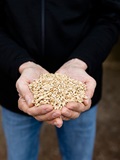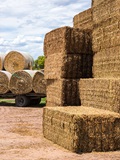Central West NSW
20 May 2020
| Date | CW 23 | CW 22 | CW 5YA |
|---|---|---|---|
| 06-Jan-23 | 264 | 200 | 307 |
| 13-Jan-23 | 275 | 200 | 298 |
| 20-Jan-23 | 285 | 200 | 296 |
| 27-Jan-23 | 293 | 200 | 307 |
| 03-Feb-23 | 303 | 200 | 307 |
| 10-Feb-23 | 318 | 190 | 300 |
| 17-Feb-23 | 319 | 190 | 300 |
| 24-Feb-23 | 320 | 190 | 300 |
| 03-Mar-23 | 325 | 190 | 294 |
| 10-Mar-23 | 333 | 190 | 290 |
| 17-Mar-23 | 333 | 190 | 292 |
| 24-Mar-23 | 333 | 190 | 292 |
| 31-Mar-23 | 338 | 195 | 296 |
| 07-Apr-23 | 343 | 195 | 298 |
| 14-Apr-23 | 343 | 195 | 298 |
| 21-Apr-23 | 343 | 195 | 303 |
| 28-Apr-23 | 348 | 198 | 314 |
| 05-May-23 | 348 | 198 | 315 |
| 12-May-23 | 348 | 199 | 316 |
| 19-May-23 | 348 | 200 | 319 |
| 26-May-23 | 348 | 200 | 320 |
| 02-Jun-23 | 350 | 200 | 327 |
| 09-Jun-23 | 350 | 204 | 327 |
| 16-Jun-23 | 348 | 208 | 327 |
| 23-Jun-23 | 345 | 208 | 327 |
| 30-Jun-23 | 343 | 208 | 341 |
| 07-Jul-23 | 330 | 208 | 342 |
| 14-Jul-23 | 318 | 208 | 342 |
| 21-Jul-23 | 305 | 208 | 342 |
| 28-Jul-23 | 305 | 208 | 343 |
| 04-Aug-23 | 305 | 208 | 344 |
| 11-Aug-23 | 305 | 208 | 355 |
| 18-Aug-23 | 303 | 208 | 375 |
| 25-Aug-23 | 300 | 208 | 374 |
| 01-Sep-23 | 300 | 210 | 367 |
| 08-Sep-23 | 210 | 367 | |
| 15-Sep-23 | 200 | 343 | |
| 22-Sep-23 | 200 | 338 | |
| 29-Sep-23 | 200 | 335 | |
| 06-Oct-23 | 200 | 325 | |
| 13-Oct-23 | 200 | 307 | |
| 20-Oct-23 | 200 | 305 | |
| 27-Oct-23 | 200 | 304 | |
| 03-Nov-23 | 200 | 305 | |
| 10-Nov-23 | 200 | 306 | |
| 17-Nov-23 | 200 | 306 | |
| 24-Nov-23 | 200 | 305 | |
| 01-Dec-23 | 209 | 304 | |
| 08-Dec-23 | 218 | 306 | |
| 15-Dec-23 | 225 | 305 | |
| 22-Dec-23 | 230 | 306 | |
| 29-Dec-23 | 253 | 316 |
Notes:
Change in price is the change since the last report. Hay quoted is sourced and delivered locally, GST exclusive unless stated otherwise. It should be noted that local prices quoted may not be the cheapest available, sourcing it from another region may be more affordable, and buyers are encouraged to evaluate all options. Prices are indicative to a mid-range shedded product, and based on the best indication of market value at the time of reporting. It should be noted there is a wide variation in quality of hay, prices for a mid-range product will not reflect the weighted average of trade. Prices will naturally vary based on the product quantity and quality, buyer/seller relationship and the size of the trade.The hay report has been commissioned by Dairy Australia to provide an independent and timely assessment of hay markets in each dairy region. This report is created using data provided by the Australian Fodder Industry Association (AFIA). It should be remembered that actual prices may vary for quality or other reasons. Whilst all reasonable steps have been taken to ensure the accuracy of the information contained in this report, Dairy Australia disclaims all liability to the fullest extent permitted by Australian law for any inadvertent errors and for any losses or damages stemming from reliance upon its content. Dairy Australia recommends all persons seek independent advice and, where appropriate, advice from a qualified advisor before making any decisions about changes to business strategy.
Commentary
- Widespread low rainfall totals in the south of the region, with averages of between 5mm and 10mm of rain, however the central and northern parts saw almost no rainfall for the week. Frosts continue to be a cause for some concern.
- Pasture growth in the south of the region continues to provide limited green feed availability. However, most of the region remains brown and dry. Supplementary fodder continues to be fed out to herds.
- Cereal crops in the north that were hit by frosts over the last few weeks are showing frost damage, and some growers are making the call to cut the crops for hay rather than push them through to grain harvest, though this appears to be a case-by-case or even paddock by paddock call.
- Canola crops around Lake Cargelligo are looking good, having been sown early to take advantage of the rainfall and link up to the subsoil moisture. The crops are at around 40% flowering and are progressing well. Canola crops around Forbes and further south are also showing good potential.
- Sheds continue to empty out in the region; this continues to be a mix of some growers clearing older hay stocks in preparation for the next season and mixed farmers depleting their on-farm stores for feeding out to livestock herds.
- Enquiries have remained high, with dry conditions in the region and in other parts of the state keeping demand high. Prices seem to have stabilised, but without any further rainfall, they may lift again. High quality hay, where available, is still claiming a price premium, and transport costs are having an additional effect on pricing.
- No change to pricing this week.
- Cereal hay: +/-0 ($280 to $320/t). Prices remain steady this week.
- Lucerne hay: +/-0 ($395 to $430/t). Prices remain steady this week.
- Straw: +/-0 ($95 to $150/t). Prices remain steady this week.
- Pasture hay: +/-0 ($270 to $315/t). Prices remain steady this week.
- Please note: Unless stated otherwise, prices are per tonne, sourced and delivered locally. The price range indicated is for feeds of varying quality with the price range generally indicative of quality of feed. We recommend feed testing and viewing of fodder before purchase to be sure of the quality of feed.

